Help "double carbon" you and me walk together| Annual Conference on Climate Change Strategy Communication was successfully held
Helping the "double carbon" walk together-the annual meeting on climate change strategy communication was successfully held in Beijing recently. The meeting invited all stakeholders in the field of climate and communication to share the development trends and cutting-edge progress of climate communication at home and abroad. At the same time, it conducted discussions and exchanges around the hot topic of local "double carbon" construction, and released the "Yiqian Low Carbon" strategy communication small recruitment information for the fourth phase of the funding plan.
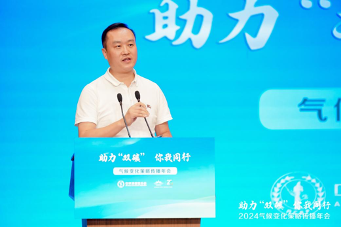
Wang Jiajia, Deputy Director of the Public Welfare Department of the China Environmental Protection Federation, presided over the meeting
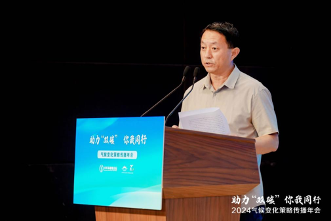
Zheng Qingbao, Deputy Secretary-General of the China Environmental Protection Federation
Mr. Zheng Qingbao, Deputy Secretary-General of the China Environmental Protection Federation, attended this conference and delivered a speech. Zheng Qingbao said that in the process of realizing the "double carbon" goal, social organizations, as important third-party forces outside the government and enterprises, have a value that cannot be ignored in promoting exchanges and cooperation between different stakeholders, enhancing public awareness, conducting industry supervision, and promoting policy optimization. At present, most domestic environmental protection social organizations are still engaged in ecological protection and pollution prevention and control work."Double carbon" and addressing climate change are still relatively new topics for the entire field of environmental protection social organizations. In order to build a benign ecosystem for the industry, the China Environmental Protection Federation and the Energy Foundation have launched the "Yiqian Low Carbon" strategy communication micro-subsidy program project since 2020 to help social organizations explore working paths in the climate field through funding and capacity building.
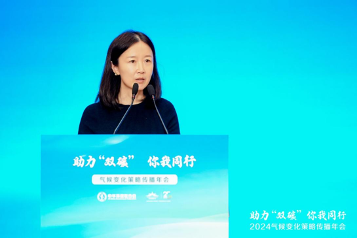
Jing Hui, Senior Program Director of Strategic Communications, Energy Foundation
Jing Hui, senior project director of strategic communication at the Energy Foundation, attended the conference and delivered a speech. Jing Hui said that the characteristics of social organizations in terms of local, public welfare and independence enable them to provide unique value that is different from other entities. At present, the institutions involved in climate communication are becoming more and more diverse, not only from the climate circle, but also from the pan-environmental protection circle, sustainable development circle, and even a wider circle. In terms of communication content, actively establishing the integration of climate and other topics to achieve "climate +" is also an obvious trend in social organization's climate work. In terms of "climate + transportation","climate + cultural tourism", and "climate + lifestyle", eye-catching communication cases have emerged. In addition, communication methods and methodologies are also undergoing innovation.
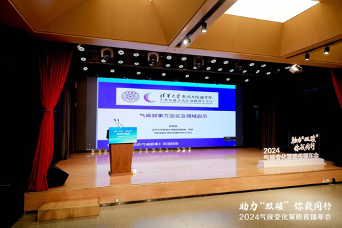
Zeng Fanxu, a professor at the School of Journalism and Communication at Tsinghua University, shared online
Zeng Fanxu, a professor at the School of Journalism and Communication at Tsinghua University, participated in this conference and shared content with the theme of "Sharing of Climate Communication Research Results and Its Enlightenment for Social Organizations 'Climate Communication Work." Zeng Fanxu said that the climate issues that the public is exposed to are all numbers or abstract scientific content, which feels distant. The methodology of climate narratives is to bridge the gap between public awareness and triggering action. Climate communication work needs to be based on population segmentation, matching specific communication plans, customized content, and targeted channels for different groups of people to apply narrative methodology.
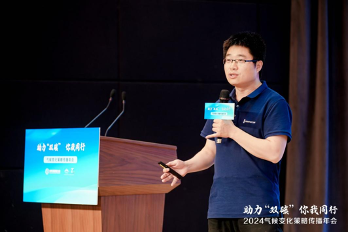
Wei Ke, a researcher at the Institute of Atmospheric Physics, Chinese Academy of Sciences
Wei Ke, a researcher at the Institute of Atmospheric Physics, Chinese Academy of Sciences, participated in this conference and shared content with the theme of "Needs and Challenges for Scientific Communication of Climate Change". Wei Ke said that the climate change we are experiencing is unprecedented. The frequent occurrence of severe weather will bring many disasters and risks to society and the public. But we must also understand climate change objectively and emphasize that everyone can do something, and everyone can do something to reduce personal carbon emissions. From the simplest to the most complex, such as turning off lights at random, empty disk action, rational consumption, recycling, etc., can all promote the transformation of personal carbon emissions and the entire social lifestyle. This process not only saves money, but also makes it more environmentally friendly. Climate science popularization is very important and needs to build consensus. As long as there is consensus in understanding and one thing is done together, it will definitely be achieved.
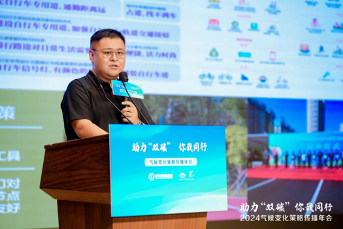
Wang Jinxuan, Director of Communication, Shanxi Kecheng Energy and Environment Innovation Research Institute
Wang Jinxuan, director of communication at Shanxi Kecheng Energy and Environment Innovation Research Institute, attended this conference and shared cases with the theme of "Actively responding to climate change and promoting green and low-carbon development-Introduction and Outlook of the Wheel Wheel Project". Wang Jinxuan said that the Wheel Wheel Project has been carried out for three seasons. In the first quarter, the project carried out an evaluation of the city's cycling friendliness, in the second quarter, the project focused on motivating strategies for commuters, and in the third quarter, it transformed from an atmosphere builder to a builder of a beautiful city that promotes cycling. In the third season, the project released a good parking guide for Longcheng's own bicycles, installed and set up its own bicycle parking racks, and opened dozens of bike-friendly shops in Taiyuan to share bike-friendly kits.
The project has been developed from scratch, from a little bit to the first step, from never recognized to partners in various fields. The cooperation between management departments, bicycle companies, universities and related companies, office buildings, hotels, etc. has been promoted from a small seed to a small tree. Special thanks should be given to the Energy Foundation and the China Environmental Protection Federation for their support for three consecutive years. In the past three years, the Gulu Gulu Project has also explored a new path for social organizations to participate, advocate and practice low-carbon travel, and has also achieved many new results.
The three years since the Ru-Ru In the past three years, Taiyuan City has built a bicycle cycling lane running through the north and south of the city along the Fenhe River, attracting a large number of cycling enthusiasts. Many young people have launched check-in activities in Xiaohongshu, and even bloggers from other places take their cars to take the high-speed rail to experience this bicycle lane, and the details of the city's cycling infrastructure are becoming more and more humane. For example, cycling lanes have more and more places for riders to rest, beverage vending machines, and electric slides for getting on and off bicycles.
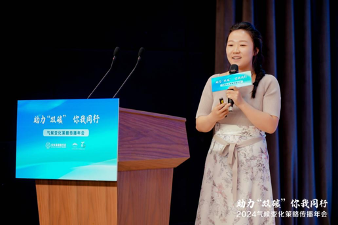
Air Man Climate Commissioner Li Bingnan
Air Man Climate Communication Commissioner Li Bingnan attended this conference and shared a case with the theme of "Traditional Village Energy Low-Carbon Transformation and Climate Communication Plan".
Li Bingnan said that Air Man participated in the "Elite Project" of the China Environmental Protection Federation in 2023 and learned strategies and methods such as "visualizing feelings" at the communication strategy meeting,"small but beautiful" communication content focus, and "the most fit" communication channels and other strategies and methods. Since then, they have applied these communication strategies to the communication process of the projects they have done. The following are the seven changes in the communication work of Air Man in the past year: First, the content has gradually shifted from a purely popular science form to a story-based, supplemented by science popularization; Second, the communication form has shifted from tweet-based to a combination of various forms such as "tweets + Short videos"; Third, the plot of Short videos has shifted from plain narration to starting with "conflict suspense", and gradually towards a series of Short videos develop; Fourth, the communication channel focuses on the most fit WeChat platform, and releases strong logical words and thoughts by deeply cultivating public accounts; fifth, more attention is paid to producing and releasing communication outputs based on timing and important time nodes; sixth, the spokesperson of the Short Video has changed from a third-party narrator of institutional members to a rural entity in the survey area; seventh, the audience has expanded from the environmental protection circle to a wider entity.
Of course, there are also many challenges in specific work. For example, in the process of experiencing visualization, you need to find a place in rural communities that can have story points, have no strangeness to the camera, and can also connect your personal experience with climate change. Shooting connected characters is actually very difficult. Secondly, how to tell China's story well? Chinese villages contain a lot of wisdom to deal with climate change, but climate activists still need to present this wisdom based on traditional Chinese culture on the stage of international climate discourse with the help of cross-cultural communication skills to do a good job in cross-cultural communication on climate issues. Spread and tell the Chinese story well.
Li Bingnan said that the "Chivalrous Xing-Traditional Village Energy Transformation and Climate Communication Plan" takes China's "Clean Heating in Rural Areas in Northern China" as the core topic and is based on five typical traditional cultural villages with research and reserves. Short videos and other forces from all walks of life include grassroots governments, college student village officials, scientific research institutions, university associations, and intangible cultural inheritors to carry out public activities that integrate energy transformation and climate science popularization, including photo tours, Short Video, etc. Through cross-border cooperation and urban-rural interaction, discover and disseminate "energy substitution" and "stories" of climate action with local characteristics of the Guanzhong Plain to enhance the climate communication capabilities of traditional villages and provide vivid and rich services for rural climate response and beautiful rural construction. Inspiration samples and references.
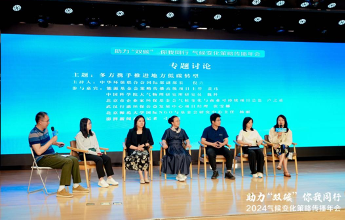
Panel discussion: Various parties work together to promote local low-carbon transformation
Huang Wei, senior project director of strategic communication at the Energy Foundation, Wei Ke, researcher at the Institute of Atmospheric Physics, Chinese Academy of Sciences, Lu Zhiyao, director of climate change and business sustainability projects of the Beijing City Entrepreneurs Environmental Protection Foundation, Zhang Wenna, project manager of Wuhan Xingche Environmental Protection and Charity Development Center, Yang Li, director of the International NGO and Foundation Research Center of Beijing Normal University, and Diao Fanchao, senior reporter of The Paper, jointly participated in the special discussion session of this conference. Ni Yao, Deputy Director of the International Department of the China Environmental Protection Federation, chaired the theme discussion.
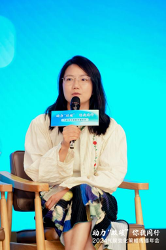
Huang Wei, Senior Program Director of Strategic Communications, Energy Foundation
When talking about how social organizations can participate in the implementation of local "double carbon", Huang Wei, senior project director of strategic communication at the Energy Foundation, said that first of all, each region has a different development stage, and what should be done specifically in the "double carbon" map. Each region faces its own unique problems. Secondly, the promotion of local "double carbon" implementation needs to move downwards, more subdivided industry topics and policy goals, and at the local level to involve social organizations. All of these still require basic work such as research, capacity building, and ecosystem building. Since the implementation of the "Yiqi Low Carbon" micro-subsidy project three years ago, it has supported and witnessed the innovation of local institutions in climate change communication and public participation, and a number of new projects and models to solve local problems have emerged. I believe that in the future, with the support and efforts of institutions in more fields, the space for social organizations to make efforts will be further expanded.
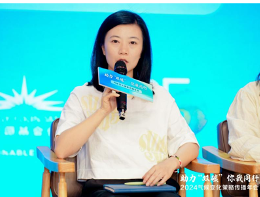
Lu Zhiyao, Director of Climate Change and Business Sustainability Program, Beijing City Entrepreneurs Environmental Protection Foundation
Lu Zhiyao said that the SEE Foundation is a public welfare organization mainly focusing on environmental protection funding. In the past 20 years, SEE has funded thousands of environmental protection organizations, and many have explored the direction of pollution reduction and the transition to low-carbon. At present, some organizations have encountered difficulties in the transformation process, such as rough working methods in the early stage of the project, unfriendly relations between enterprises and the government, insufficient financial support, lack of innovative ideas and directions, limited resource links, etc. These issues all take time to improve. I hope to see more innovative forms and cooperation in the future. Many resource-related parties need to learn from each other and learn from each other to form synergy and form chemical reactions. This may also be a way to emerge good solutions.
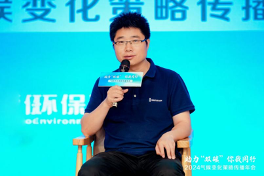
Wei Ke, a researcher at the Institute of Atmospheric Physics, Chinese Academy of Sciences
Wei Ke, a researcher at the Institute of Atmospheric Physics, Chinese Academy of Sciences, said that as long as local governments strictly abide by policies and rely on scientific and technological progress, the "double carbon" work can continue to move forward. The promotion of "double carbon" should be more aimed at young people, who are the hope for the future. Young people with creative thinking are more able to create a new way of life. I hope to see better "double carbon" activities that are more practical and Chinese, can be better integrated with the public, especially young people, and can promote activities that are popular and popular among the broad masses of the people and are particularly welcomed by everyone.
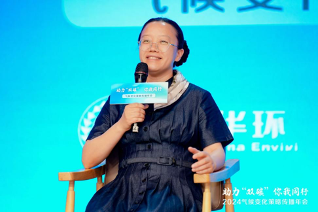
Yang Li, Director of the International NGO and Foundation Research Center at Beijing Normal University
Yang Li, director of the International NGO and Foundation Research Center at Beijing Normal University, said that social organizations do not have the same power as the government and do not have as much capital as companies, but they can do many things that the government cannot do that companies are unwilling to do. The biggest advantages of social organizations are their sense of mission, agility and flexibility, their ability to identify the needs of target groups in a timely manner, and provide personalized solutions in a timely manner. The survey found that in social organizations with smooth intergenerational changes, young people often take many innovative measures in the face of new situations. Local social organizations hope to establish a multi-party cooperation support system in the field to help them better solve problems. Every social organization, no matter what stage of its life cycle, has strength. As long as it persists, it will change!
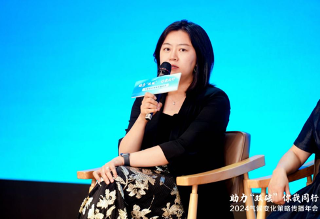
Diao Fanchao, senior reporter of The Paper News
Diao Fanchao, senior reporter of The Paper, said that various difficulties and twists and turns faced by local governments in the process of realizing "double carbon" should also be focused on, including policies, transformation, investment, talents and other aspects. Local governments face great difficulties in transforming under economic pressure, and transformation requires investment and policy support. In addition, transformation also requires high-end talents. In this regard, local NGOs have advantages. First of all, the staff of local NGOs are local people, who can better take root locally and do solid work. Secondly, local institutions have a natural advantage in that they can better play a bridge role, gather forces to coordinate progress, integrate resources scattered in different departments, and help local "double carbon" goals.
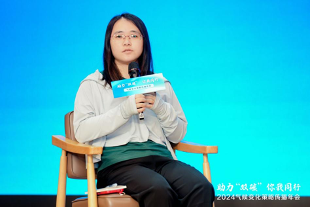
Zhang Wenna, Project Manager of Wuhan Xingche Environmental Protection Charity Development Center
Zhang Wenna, project manager of Wuhan Xingche Environmental Protection Public Welfare Development Center, said that Xingche Environmental Protection Public Welfare had previously focused on the field of pollution prevention and control. In 2022, we participated in the "Low Carbon Along the Way" activity of the China Environmental Protection Federation and began to pay more attention to the climate field. Xingche Environmental Protection Charity Organization has carried out a low-carbon cycling project in Jianghan District in Wuhan, and has been persisting in it for two years. When the project was launched, it first conducted road infrastructure research, and then organized non-governmental road leaders 'groups to participate. Currently, more than 50 stable members participated. At the same time, this project also promotes community publicity, and also adds multi-dimensional content such as popular science videos, low-carbon life, and garbage classification to promote and promote low-carbon life and climate change.
Talking about the difficulties in the practice of "double carbon", Zhang Wenna said that first of all, local institutions have less power in promoting specific work and need to jointly coordinate various local organizations. Taking the low-carbon cycling project as an example, during the specific promotion process, the Urban Management Bureau, the Construction Bureau, and the Traffic Management Bureau were invited to conduct research and interviews together, and the issues feedback from the masses were communicated with the various coordinating parties. Finally, the results were obtained through the efforts of many parties. Coordinate and solve. The second personal difficulty is to make effective communication. I don't know how to publicize the characteristics of the project to attract public participation. However, by participating in this event, I was greatly inspired, and I can then practice it in the communication of specific strategies for the project.
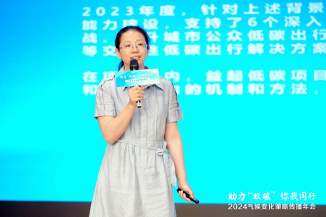
Gao Xiaoyi, Director of the International Department of the China Environmental Protection Federation
Gao Xiaoyi, Director of the International Department of the China Environmental Protection Federation, attended the conference and conducted the "Summary of Yiqi Low Carbon Phase III and Release of Recruitment Information for the Fourth Phase". It is reported that the "Yiqi and Low Carbon" strategy communication micro-subsidy plan (Phase 4) will be officially launched on May 30, 2024. Two topics were selected for this period of funding: "Promoting the Development of Local Renewable Energy" and "Climate Change and Cultural Monuments". Encourage the use of multiple research and audience analysis methods, case development and other means in project design to deeply identify the main problems faced by the target area and encourage innovation in communication strategies and methods. The project solicitation notice has been posted on the project special website:
http://www.acef.com.cn/a/zhuantilanmu/2024yqdt/index.html
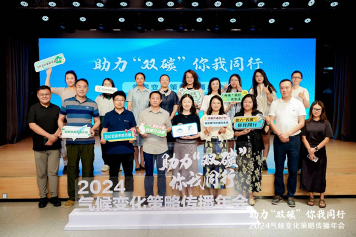
Group photo taken by some participants
In the future, the Climate Change Strategy Communication Annual Conference will strive to become a platform for annual exchanges and collaboration in the field of climate communication, allowing all sectors of society to understand the process of implementing the "double carbon" goals through the annual meeting. Various actions, while enhancing multi-party collaboration, and expanding the influence of the entire action.







